1
System Identification
Series Editors' Foreword
Preface
Acknowledgements
Contents
Notations
2
Part I: Data-based Identification
6
Chapter 1: Introduction
1.1 System Theory
1.1.1 Terminology
1.1.2 Basic Problems
1.2 Mathematical Models
1.2.1 Model Properties
1.2.2 Structural Model Representations
1.3 System Identification Procedure
1.4 Historical Notes and References
1.5 Problems
3
Chapter 2: System Response Methods
2.1 Impulse Response
2.1.1 Impulse Response Model Representation
2.1.2 Transfer Function Model Representation
2.1.3 Direct Impulse Response Identification
2.2 Step Response
2.2.1 Direct Step Response Identification
2.2.2 Impulse Response Identification Using Step Responses
2.3 Sine-wave Response
2.3.1 Frequency Transfer Function
2.3.2 Sine-wave Response Identification
2.4 Historical Notes and References
2.5 Problems
4
Chapter 3: Frequency Response Methods
3.1 Empirical Transfer-function Identification
3.1.1 Sine Wave Testing
3.1.2 Discrete Fourier Transform of Signals
3.1.3 Empirical Transfer-function Estimate
3.1.4 Critical Point Identification
3.2 Discrete-time Transfer Function
3.2.1 z-Transform
3.2.2 Impulse Response Identification Using Input-output Data
3.2.3 Discrete-time Delta Operator
3.3 Historical Notes and References
3.4 Problems
5
Chapter 4: Correlation Methods
4.1 Correlation Functions
4.1.1 Autocorrelation Function
4.1.2 White Noise Sequence
4.1.3 Cross-correlation Function
4.2 Wiener-Hopf Relationship
4.2.1 Wiener-Hopf Equation
4.2.2 Impulse Response Identification Using Wiener-Hopf Equation
4.2.3 Random Binary Sequences
4.2.4 Filter Properties of Wiener-Hopf Relationship
4.3 Frequency Analysis Using Correlation Techniques
4.3.1 Cross-correlation Between Input-output Sine Waves
4.3.2 Transfer-function Estimate Using Correlation Techniques
4.4 Spectral Analysis
4.4.1 Power Spectra
4.4.2 Transfer-function Estimate Using Power Spectra
4.4.3 Bias-variance Tradeoff in Transfer-function Estimates
4.5 Historical Notes and References
4.6 Problems
7
Part II: Time-invariant Systems Identification
8
Chapter 5: Static Systems Identification
5.1 Linear Static Systems
5.1.1 Linear Regression
5.1.2 Least-squares Estimation
5.1.3 Interpretation of Least-squares Method
5.1.4 Bias
5.1.5 Accuracy
5.1.6 Identifiability
5.1.7 *Errors-in-variables Problem
5.1.8 *Bounded-noise Problem: Linear Case
5.2 Nonlinear Static Systems
5.2.1 Nonlinear Regression
5.2.2 Nonlinear Least-squares Estimation
5.2.3 Iterative Solutions
5.2.4 Accuracy
5.2.5 Model Reparameterization: Static Case
5.2.6 *Maximum Likelihood Estimation
5.2.7 *Bounded-noise Problem: Nonlinear Case
5.3 Historical Notes and References
5.4 Problems
9
Chapter 6: Dynamic Systems Identification
6.1 Linear Dynamic Systems
6.1.1 Transfer Function Models
6.1.2 Equation Error Identification
6.1.3 Output Error Identification
6.1.4 Prediction Error Identification
6.1.5 Model Structure Identification
6.1.6 *Subspace Identification
6.1.7 *Linear Parameter-varying Model Identification
6.1.8 *Orthogonal Basis Functions
6.1.9 *Closed-loop Identification
6.2 Nonlinear Dynamic Systems
6.2.1 Simulation Models
6.2.2 *Parameter Sensitivity
6.2.3 Nonlinear Regressions
6.2.4 Iterative Solution
6.2.5 Model Reparameterization: Dynamic Case
6.3 Historical Notes and References
6.4 Problems
10
Part III: Time-varying Systems Identification
11
Chapter 7: Time-varying Static Systems Identification
7.1 Linear Regression Models
7.1.1 Recursive Estimation
7.1.2 Time-varying Parameters
7.1.3 Multioutput Case
7.1.4 Resemblance with Kalman Filter
7.1.5 *Numerical Issues
7.2 Nonlinear Static Systems
7.2.1 State-space Representation
7.2.2 Extended Kalman Filter
7.3 Historical Notes and References
7.4 Problems
12
Chapter 8: Time-varying Dynamic Systems Identification
8.1 Linear Dynamic Systems
8.1.1 Recursive Least-squares Estimation
8.1.2 Recursive Prediction Error Estimation
8.1.3 Smoothing
8.2 Nonlinear Dynamic Systems
8.2.1 Extended Kalman Filtering
8.2.2 *Observer-based Methods
8.3 Historical Notes and References
8.4 Problem
13
Part IV: Model Validation
14
Chapter 9: Model Validation Techniques
9.1 Prior Knowledge
9.2 Experience with Model
9.2.1 Model Reduction
9.2.2 Simulation
9.2.3 Prediction
9.3 Experimental Data
9.3.1 Graphical Inspection
9.3.2 Correlation Tests
9.4 Historical Notes and References
9.5 Outlook
9.6 Problems
15
Appendix A Matrix Algebra
A.1 Basic Definitions
A.2 Important Operations
A.3 Quadratic Matrix Forms
A.4 Vector and Matrix Norms
A.5 Differentiation of Vectors and Matrices
A.6 Eigenvalues and Eigenvectors
A.7 Range and Kernel of a Matrix
A.8 Exponential of a Matrix
A.9 Square Root of a Matrix
A.10 Choleski Decomposition
A.11 Modified Choleski (UD) Decomposition
A.12 QR Decomposition
A.13 Singular Value Decomposition
A.14 Projection Matrices
Appendix B Statistics
B.1 Random Entities
B.1.1 Discrete/Continuous Random Variables
B.1.2 Random Vectors
B.1.3 Stochastic Processes
Appendix C Laplace, Fourier, and z-Transforms
C.1 Laplace Transform
C.2 Fourier Transform
C.3 z-Transform
Appendix D Bode Diagrams
D.1 The Bode Plot
D.2 Four Basic Types
D.2.1 Constant or K Factor
D.2.2 (j omega)±n Factor
D.2.3 (1 + j omegaT)±m Factor
D.2.4 e±j omegatau Factor
Appendix E Shift Operator Calculus
E.1 Forward- and Backward-shift Operator
E.2 Pulse Transfer Operator
Appendix F Recursive Least-squares Derivation
F.3 Least-squares Method
F.4 Equivalent Recursive Form
Appendix G Dissolved Oxygen Data
References
Index
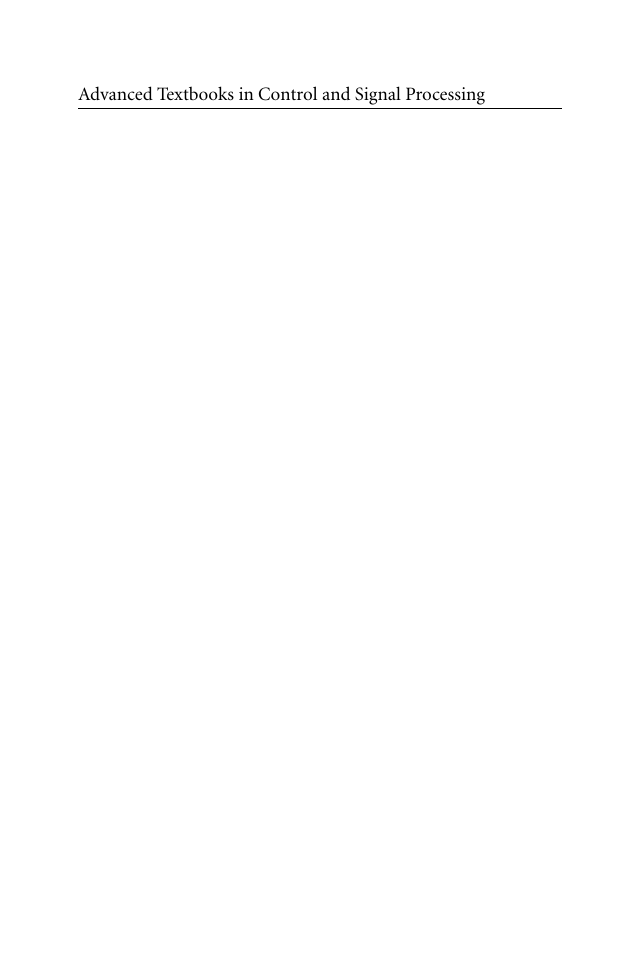
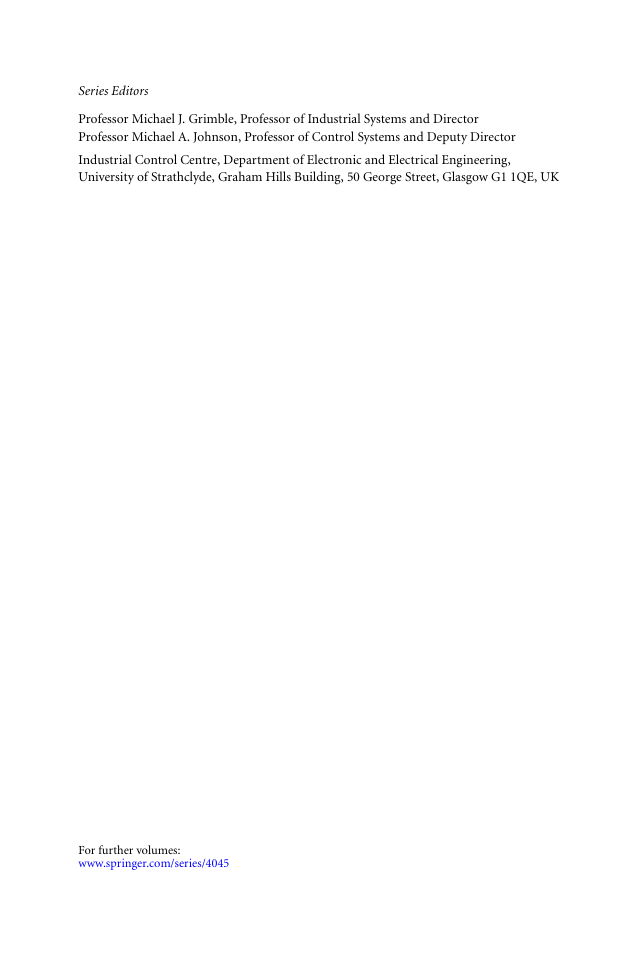
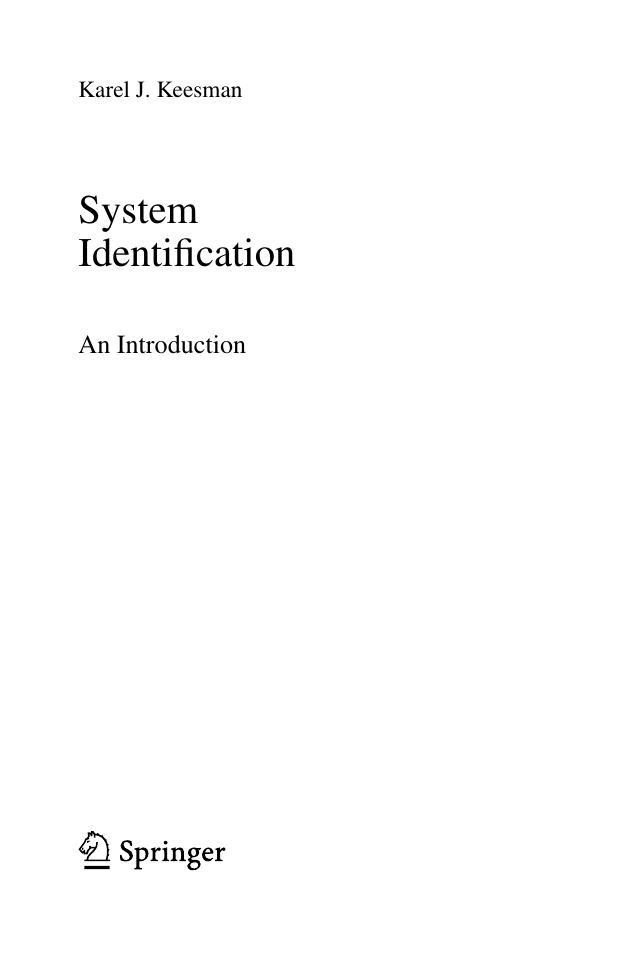
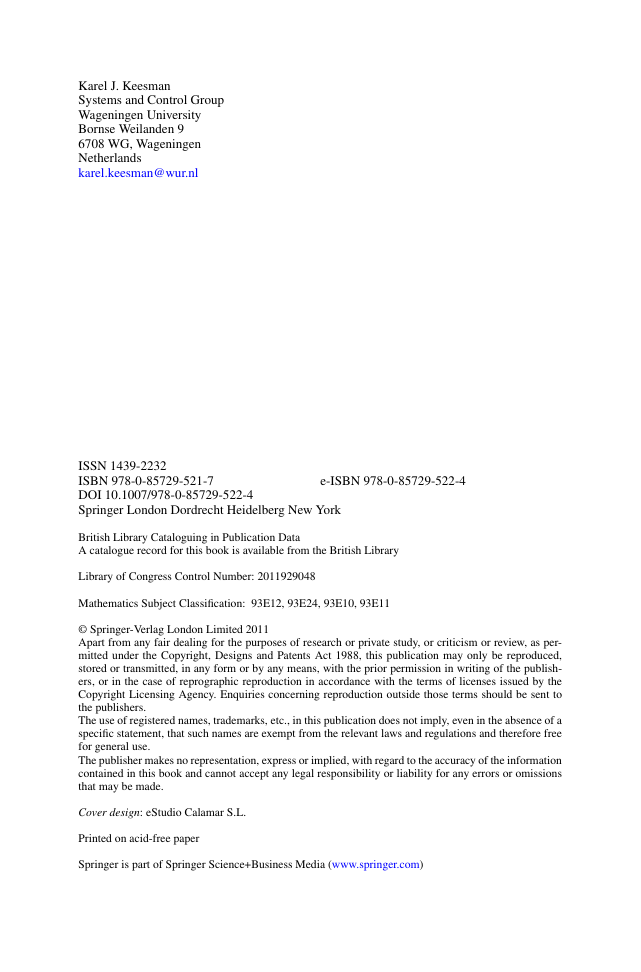
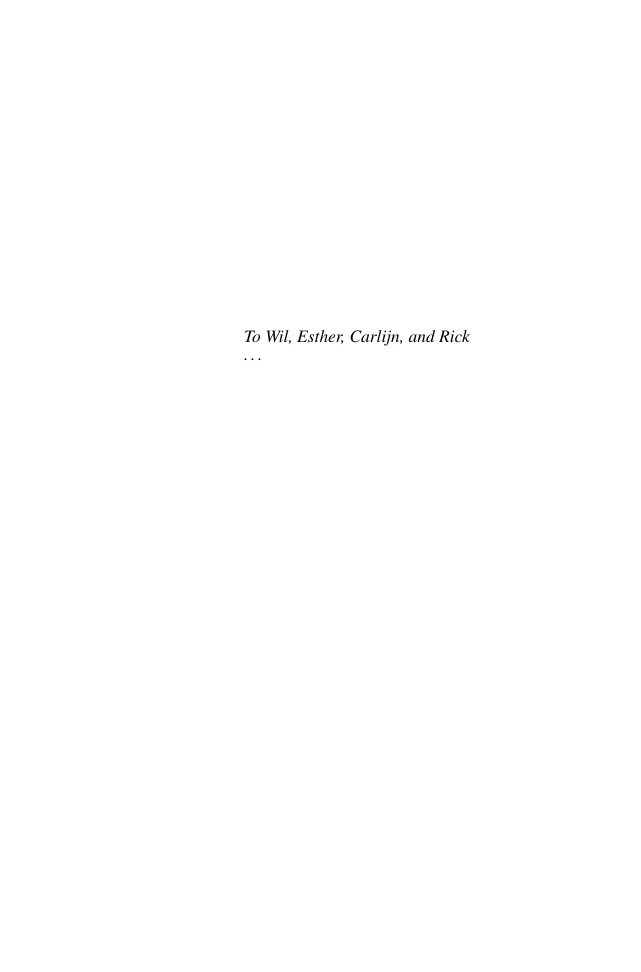
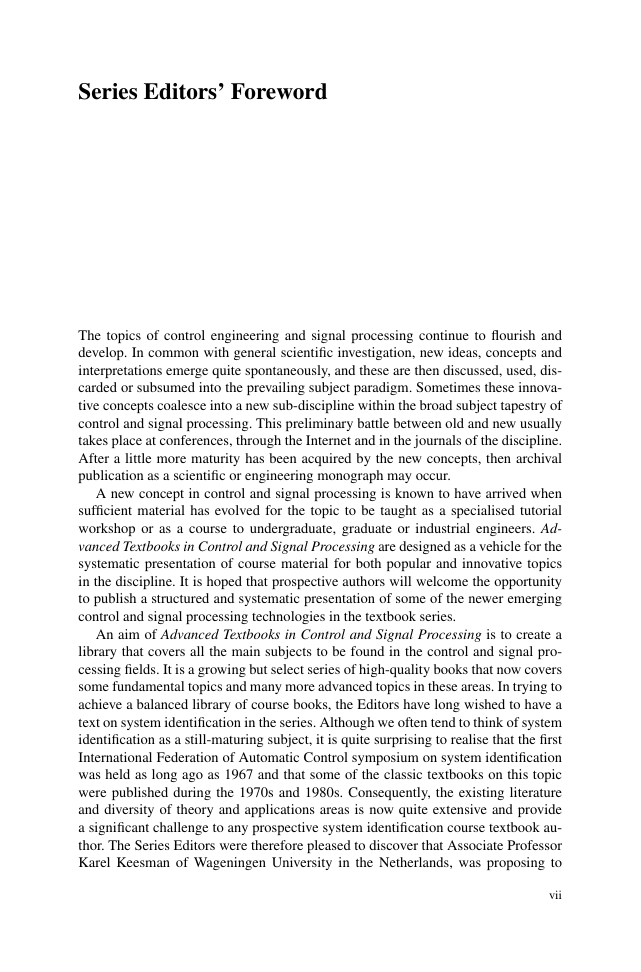
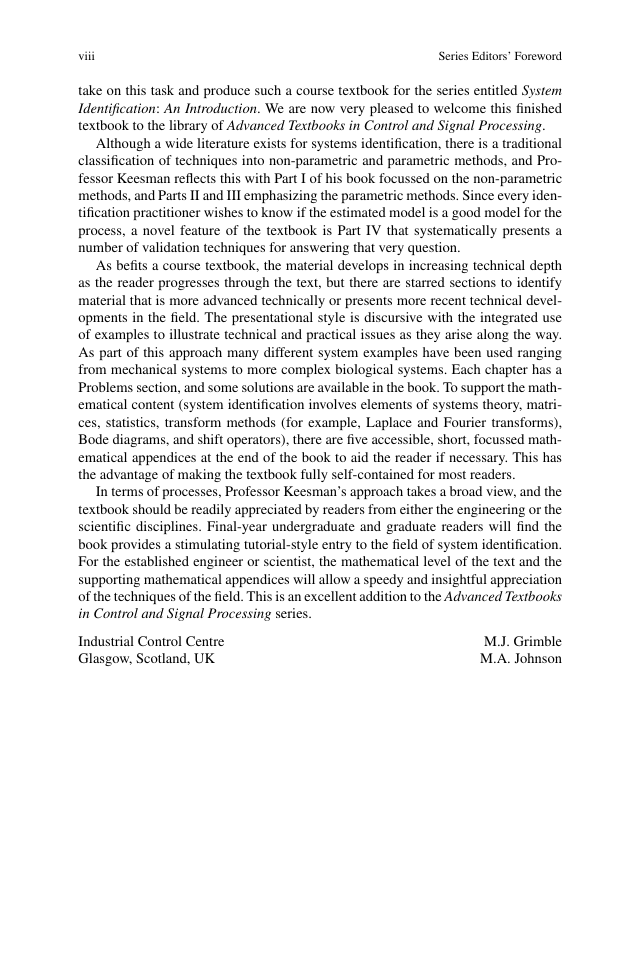
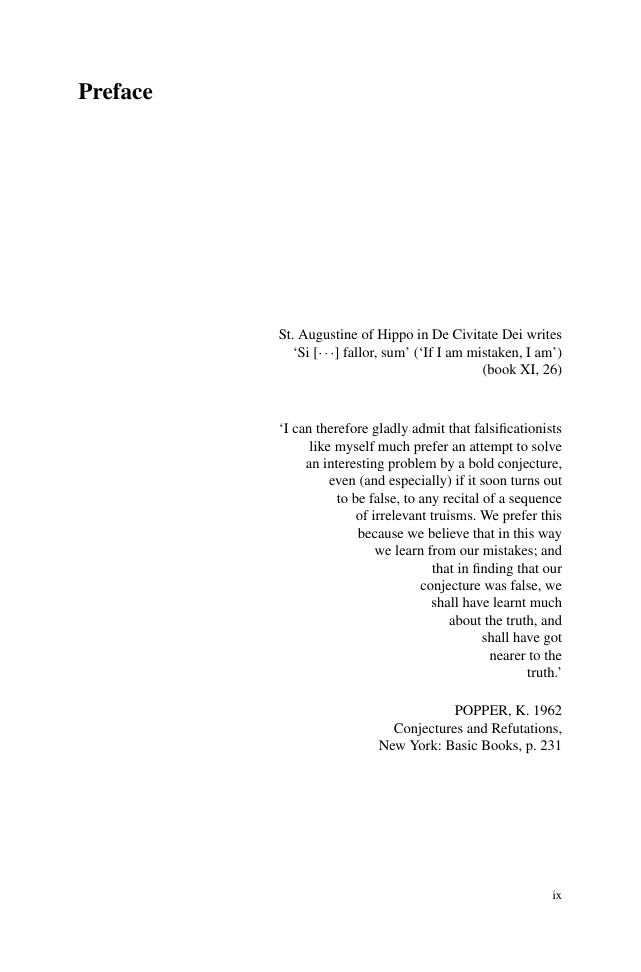








 2023年江西萍乡中考道德与法治真题及答案.doc
2023年江西萍乡中考道德与法治真题及答案.doc 2012年重庆南川中考生物真题及答案.doc
2012年重庆南川中考生物真题及答案.doc 2013年江西师范大学地理学综合及文艺理论基础考研真题.doc
2013年江西师范大学地理学综合及文艺理论基础考研真题.doc 2020年四川甘孜小升初语文真题及答案I卷.doc
2020年四川甘孜小升初语文真题及答案I卷.doc 2020年注册岩土工程师专业基础考试真题及答案.doc
2020年注册岩土工程师专业基础考试真题及答案.doc 2023-2024学年福建省厦门市九年级上学期数学月考试题及答案.doc
2023-2024学年福建省厦门市九年级上学期数学月考试题及答案.doc 2021-2022学年辽宁省沈阳市大东区九年级上学期语文期末试题及答案.doc
2021-2022学年辽宁省沈阳市大东区九年级上学期语文期末试题及答案.doc 2022-2023学年北京东城区初三第一学期物理期末试卷及答案.doc
2022-2023学年北京东城区初三第一学期物理期末试卷及答案.doc 2018上半年江西教师资格初中地理学科知识与教学能力真题及答案.doc
2018上半年江西教师资格初中地理学科知识与教学能力真题及答案.doc 2012年河北国家公务员申论考试真题及答案-省级.doc
2012年河北国家公务员申论考试真题及答案-省级.doc 2020-2021学年江苏省扬州市江都区邵樊片九年级上学期数学第一次质量检测试题及答案.doc
2020-2021学年江苏省扬州市江都区邵樊片九年级上学期数学第一次质量检测试题及答案.doc 2022下半年黑龙江教师资格证中学综合素质真题及答案.doc
2022下半年黑龙江教师资格证中学综合素质真题及答案.doc